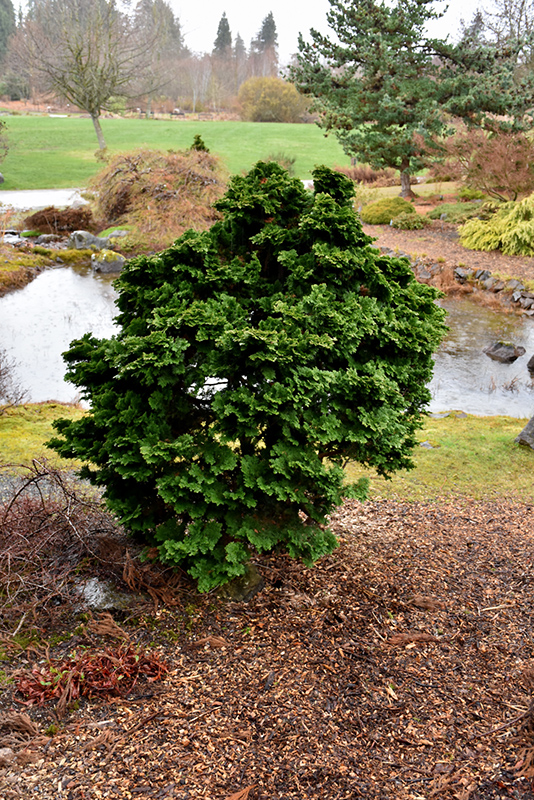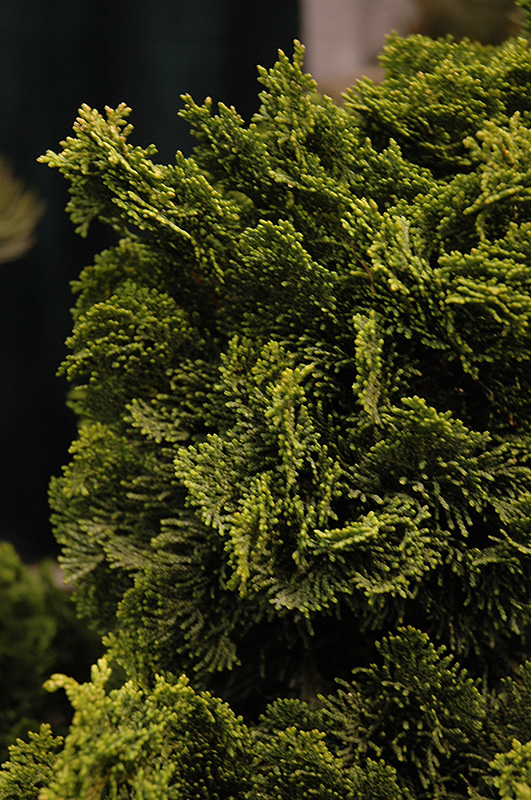>> Home
Dwarf Hinoki Falsecypress
Chamaecyparis obtusa 'Nana Gracilis'
Height: 5 feet
Spread: 4 feet
Sunlight:
![]()
![]()
Hardiness Zone: 5
Description:
A fantastic garden variety of the species with a rounded, compact habit, ideal for detail use; very delicate, almost ferny foliage
Ornamental Features
Dwarf Hinoki Falsecypress is a dwarf conifer which is primarily valued in the landscape or garden for its ornamental globe-shaped form. It has dark green evergreen foliage. The scale-like sprays of foliage remain dark green throughout the winter.
Landscape Attributes
Dwarf Hinoki Falsecypress is a dense multi-stemmed evergreen shrub with a more or less rounded form. Its relatively fine texture sets it apart from other landscape plants with less refined foliage.
This is a relatively low maintenance shrub, and should not require much pruning, except when necessary, such as to remove dieback. It has no significant negative characteristics.
Dwarf Hinoki Falsecypress is recommended for the following landscape applications;
- Accent
- General Garden Use
Planting & Growing
Dwarf Hinoki Falsecypress will grow to be about 5 feet tall at maturity, with a spread of 4 feet. It tends to fill out right to the ground and therefore doesn't necessarily require facer plants in front, and is suitable for planting under power lines. It grows at a slow rate, and under ideal conditions can be expected to live for 40 years or more.
This shrub does best in full sun to partial shade. It prefers to grow in average to moist conditions, and shouldn't be allowed to dry out. It is not particular as to soil type or pH. It is highly tolerant of urban pollution and will even thrive in inner city environments, and will benefit from being planted in a relatively sheltered location. Consider applying a thick mulch around the root zone in winter to protect it in exposed locations or colder microclimates. This is a selected variety of a species not originally from North America.

